Basilica of San Lorenzo Complex - Table of Contents .................. Florence - Table of Contents .................... Architecture Around the World
Interior
- Basilica of San Lorenzo
Florence, Italy
| Architect: |
Filippo
Brunelleschi (fill eepo brew ne less key) |
| Plan: |
Latin
cross (cruciform
shape) Aisles separated from the nave by Corinthian columns supporting rounded arches. Nave is covered by a coffered ceiling with gilded rosettes on a white ground. |
| Building material: |
Pietra
serena is a gray sandstone used extensively in Renaissance Florence;
contrasts with the white coffered ceiling |
| Most works of art patrons: | Medici
family |
| Distinction: |
The
correct use of the Corinthian
order for the capitals was new and a testament to architect
Filippo Brunelleschi’s studies of ancient Roman architecture;
integrated system of column, arches, and entablatures, based on Roman
Classical models. |
On this page, below:
Glory of the Florentine Saints
February 2020 photos
Chancel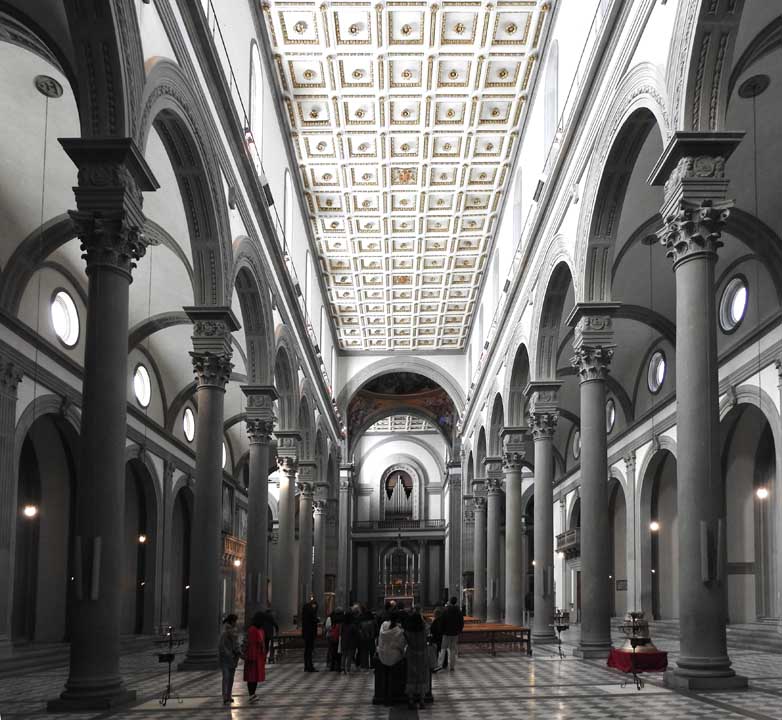 Looking towards the high altar ... Style: Renaissance ... Coffered ceiling ... Nave ... Chancel 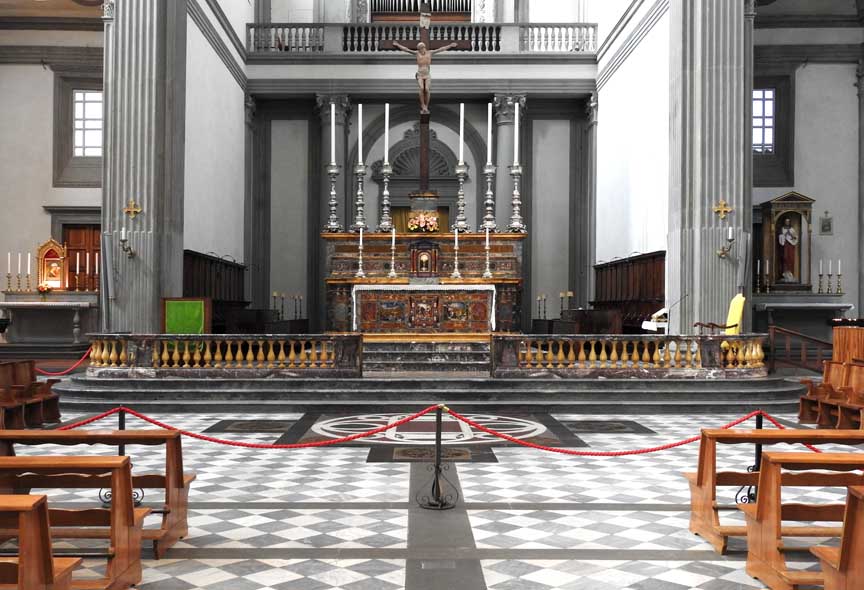 Chancel Main altar ... Two balustrades - The balustrade is undoubtedly a Renaissance, especially 14th century Florence, invention ... Geometric marble floor 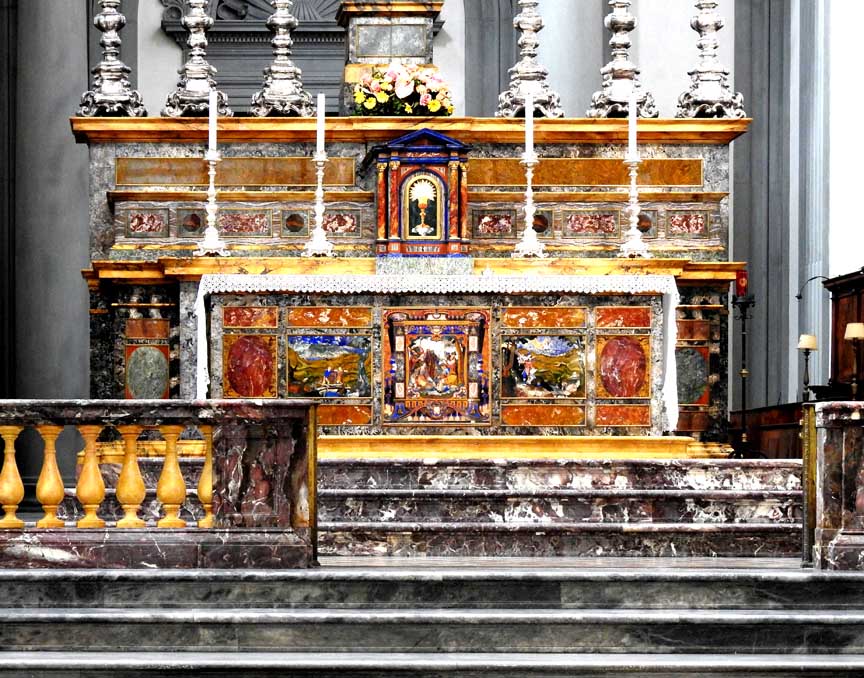 Chancel Main altar ... Marble balustrade - A Florentine Renaissance invention ... Polychromatic marble ... For more examples of polychromatic marble, see Opificio Della Pietre Dure ... Three details below: 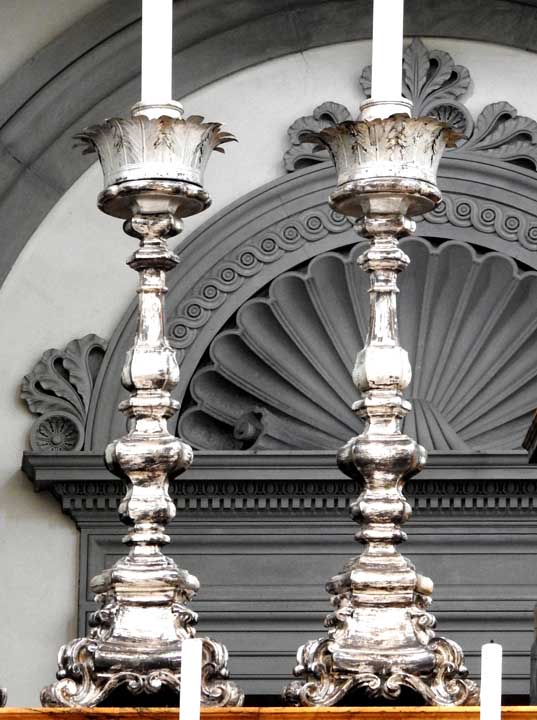 Chancel Main altar candlesticks with S scroll feet ... Guilloche ... Dentil molding 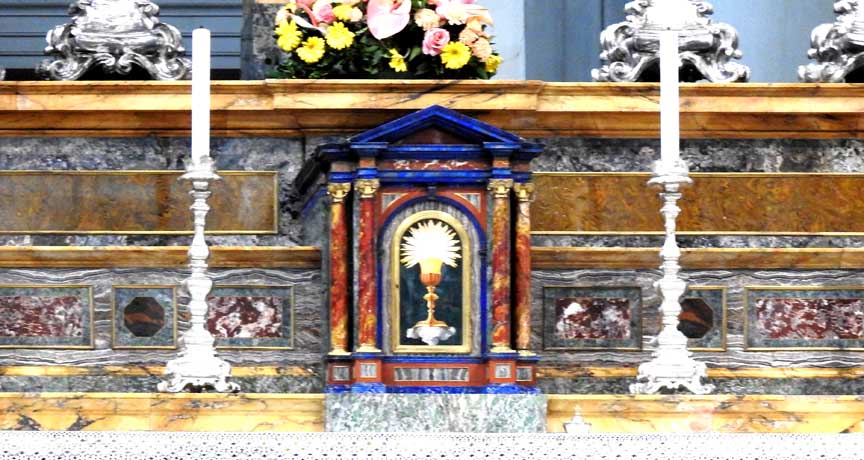 Chancel Main altar ... Center: Tabernacle ... Polychromatic marble 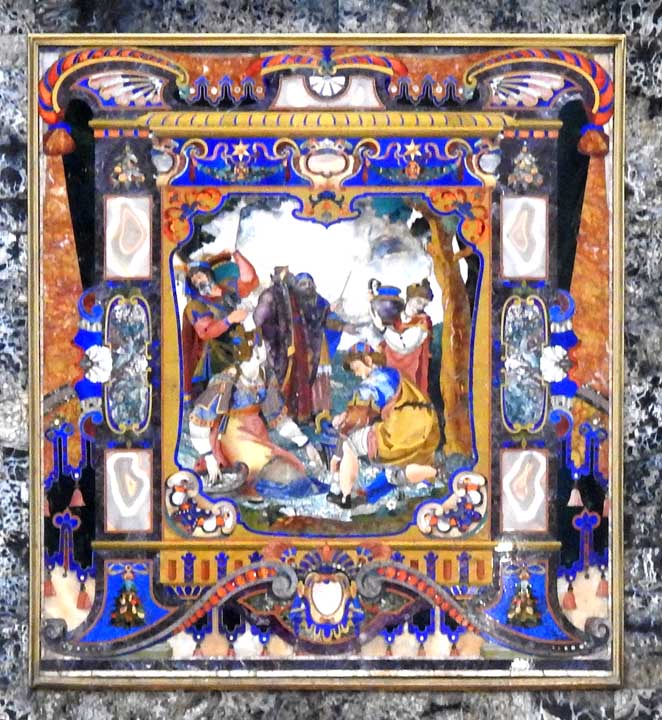 Chancel Altar detail |
Nave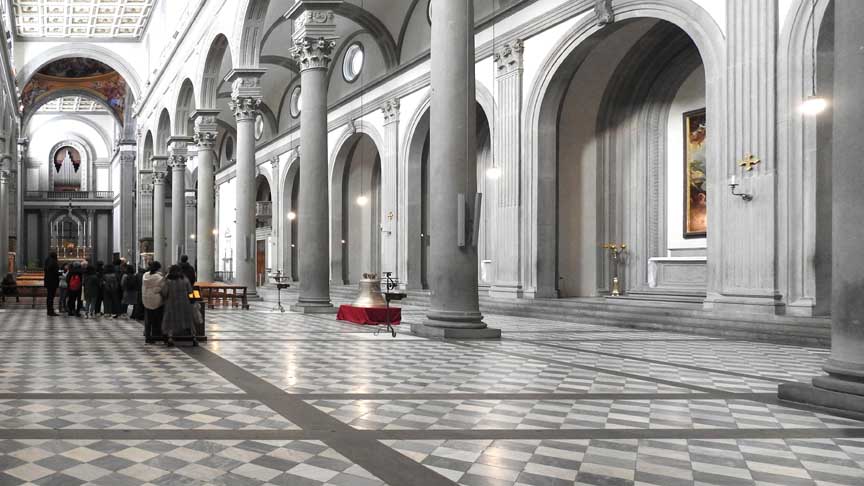 Nave Looking towards the high altar in the chancel ... The very long rectangular nave is divided from the side aisles by arched colonnades with Corinthian columns in Pietra serena gray sandstone used extensively in Renaissance Florence; contrasts with the white coffered ceiling 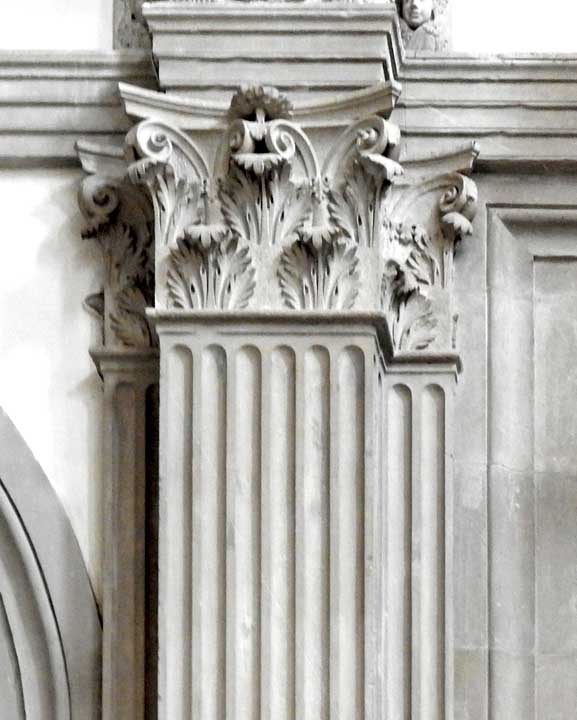 Nave Pilaster Corinthian capital and fluted shaft ... The correct use of the Corinthian order for the capitals was also new and a testament to architect Filippo Brunelleschi’s studies of ancient Roman architecture. ... The columns across the aisle have Roman smooth shafts, while the pilasters use Greek fluted shafts 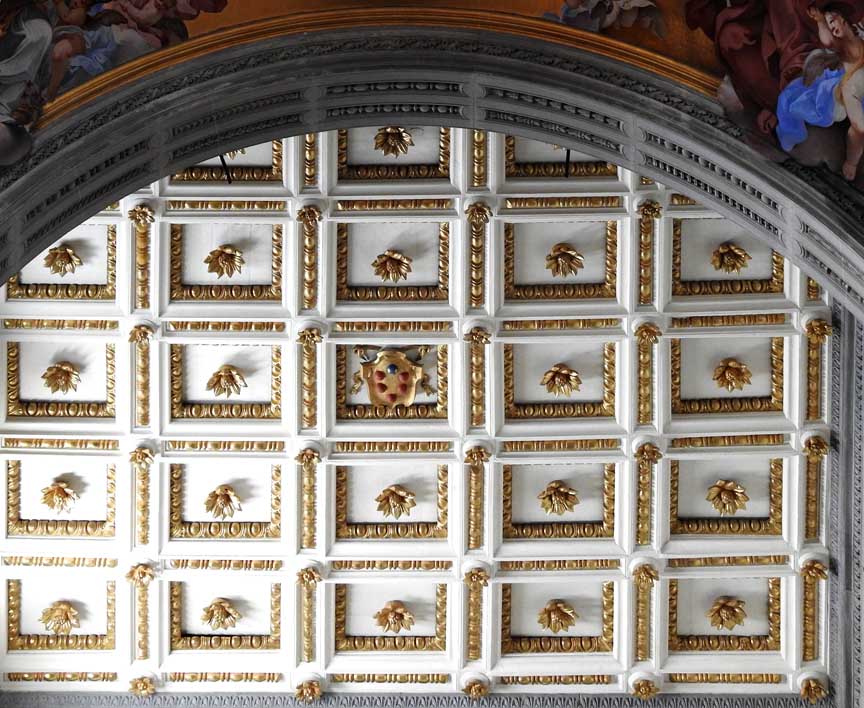 Nave Coffered ceiling ... Note Medici emblem of 6 balls 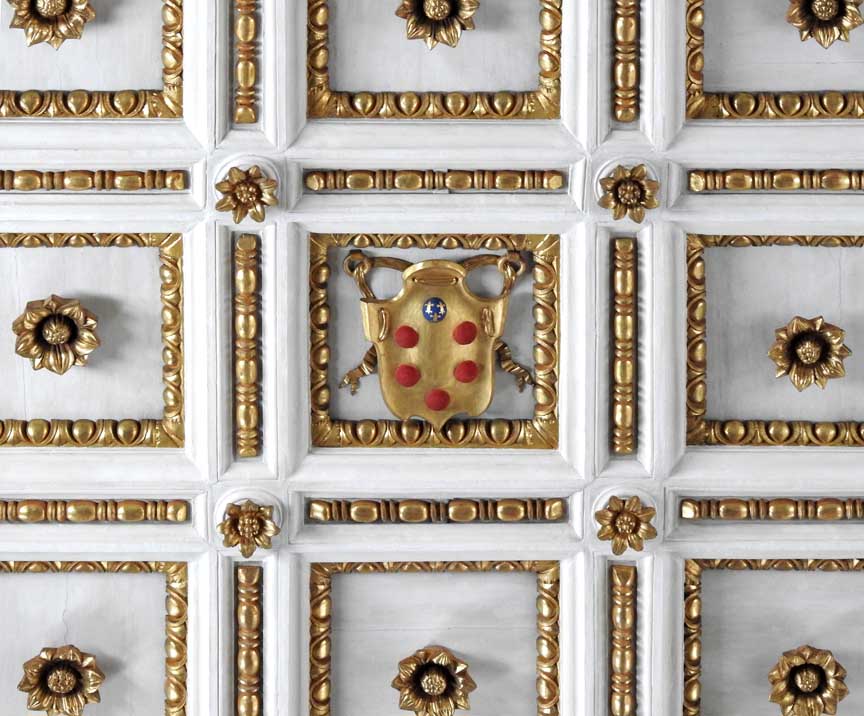 Nave Coffered ceiling ... Coffer border: Egg-and-dart molding ... In between coffers: Bead-and-reel molding, rosettes 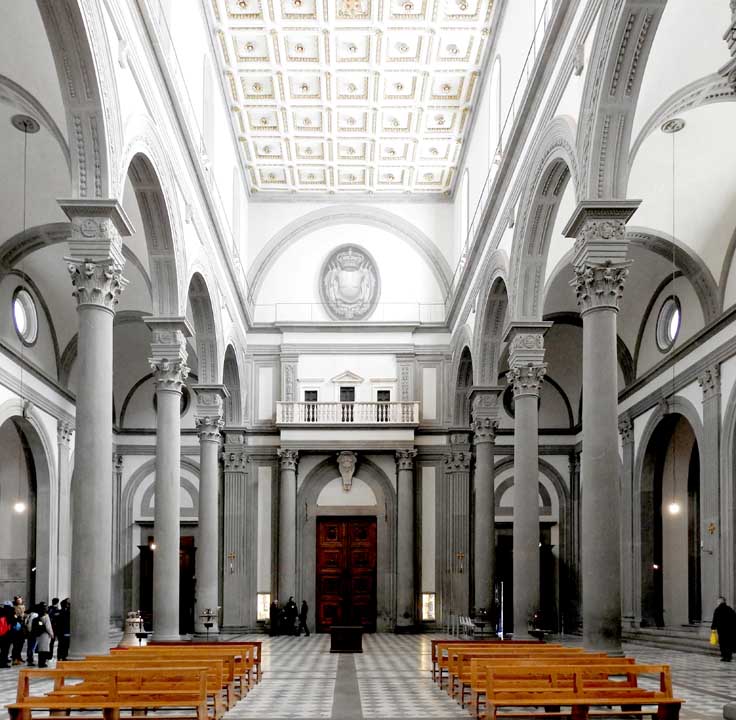 Nave Coffered ceiling ... View towards back of church and main entrance ... Balustrade is a Florentine Renaissance invention  Nave Coffered ceiling ... Arcaded Corinthian columns form the boundary of the side aisle 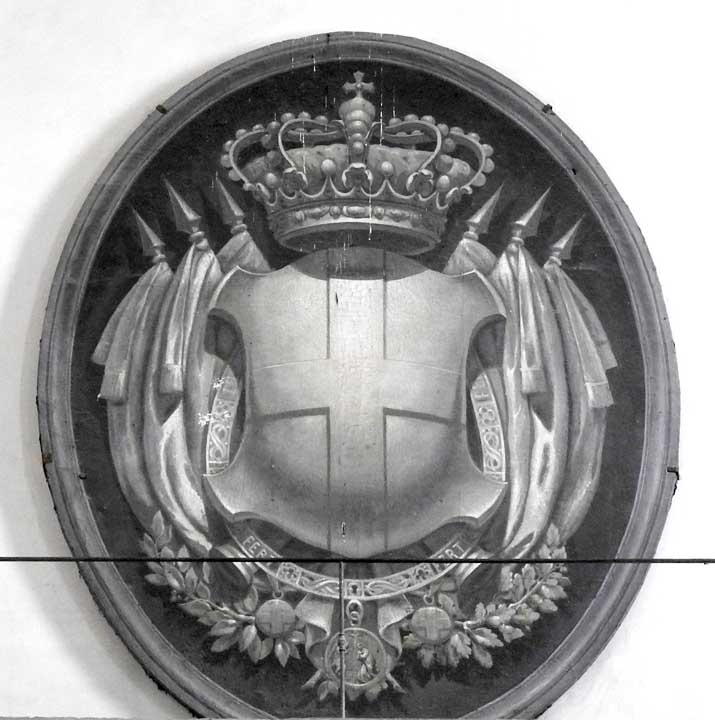 Back wall 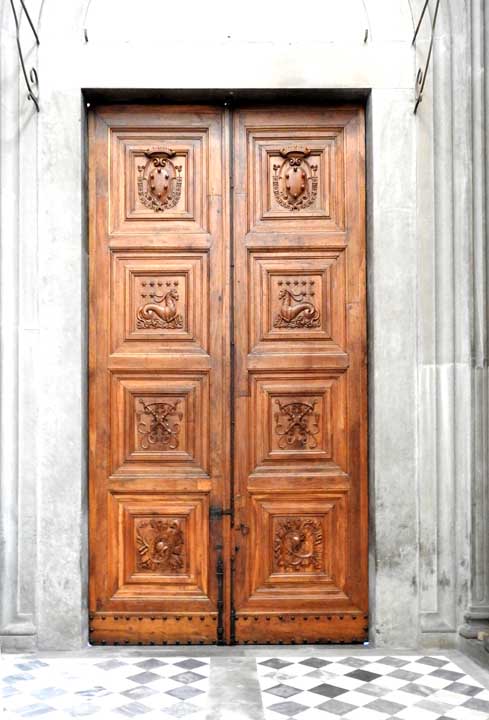 Nave Detail below: 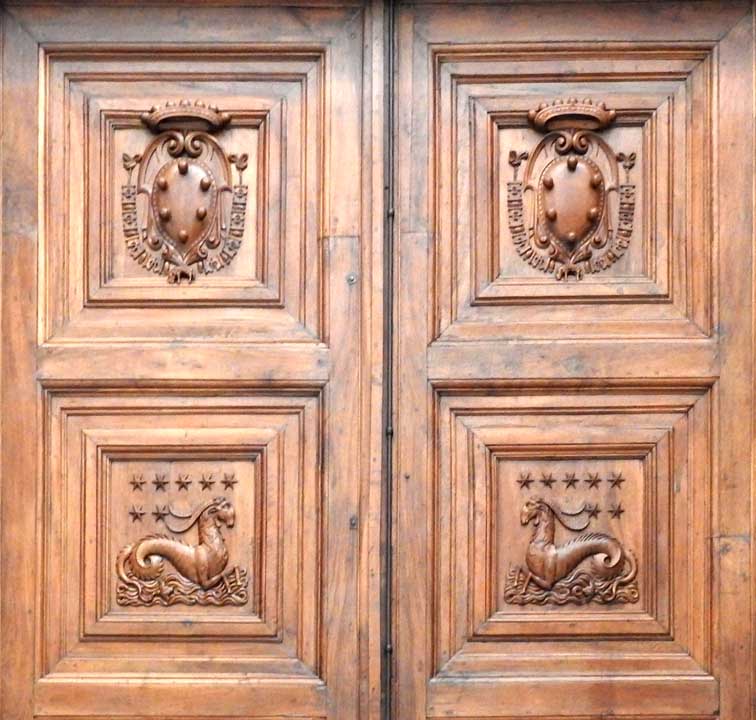 Nave 6 balls are an emblem of the Medici bankers whose family church was this basilica |
| Glory
of the Florentine Saints Dome fresco by Vincenzo Meucci 1742 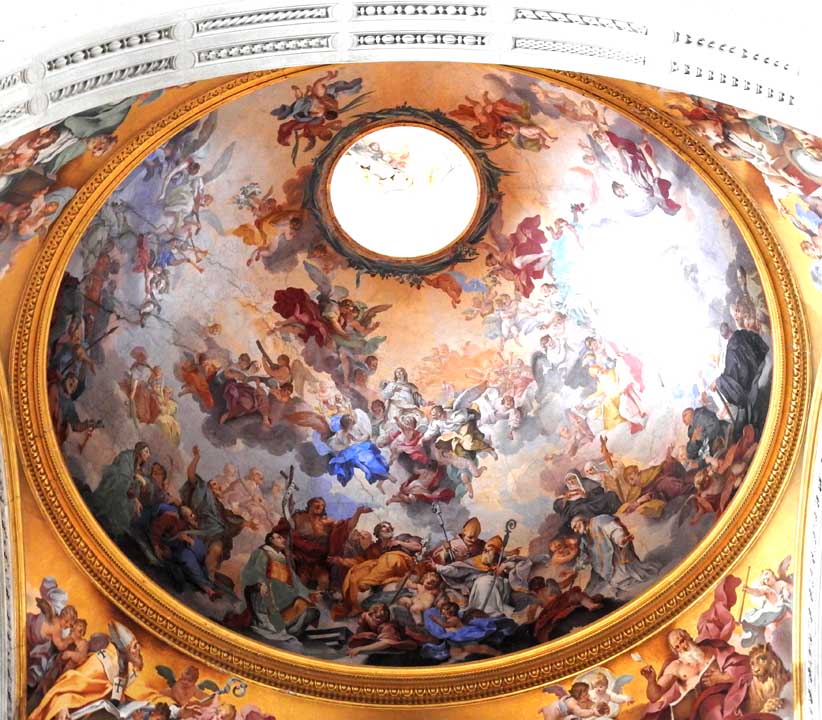 Glory of the Florentine Saints Vincenzo Meucci's masterpiece was a commission by Anna Maria Luisa de' Medici, the last Medici resident of the Pitti Palace, who contracted him to fresco the cupola of the Basilica di San Lorenzo di Firenze with the Glory of Florentine Saints (1742). ... Three details below: 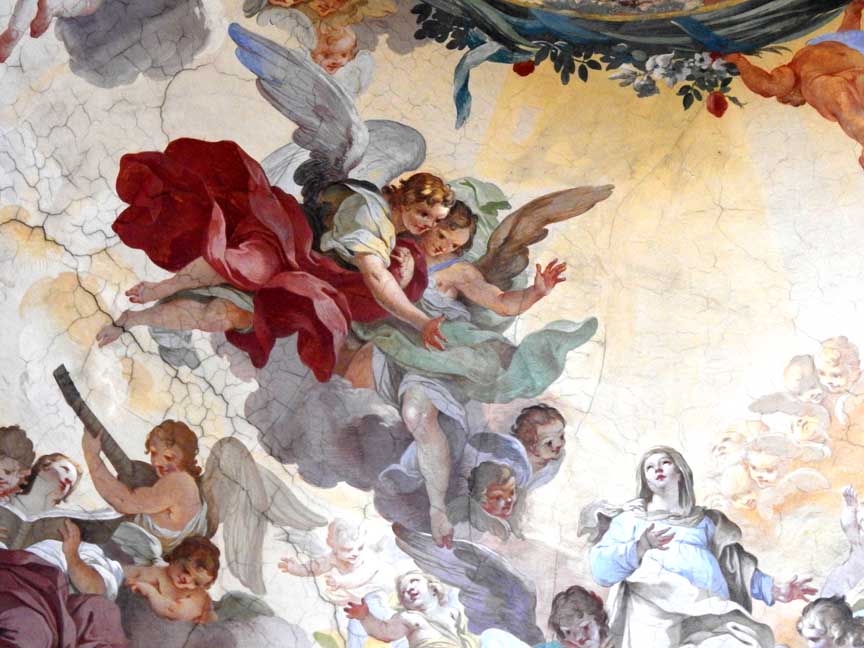 Glory of the Florentine Saints 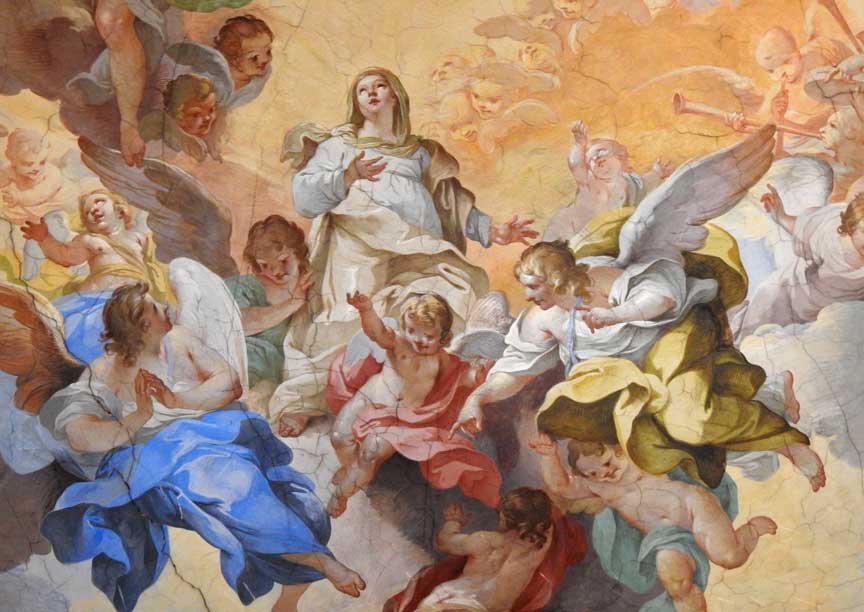 Glory of the Florentine Saints 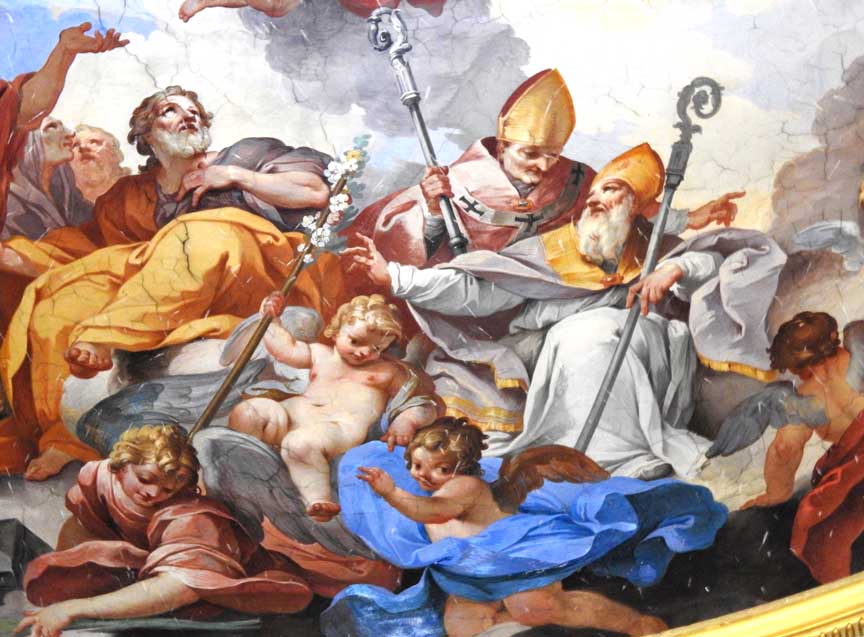 Glory of the Florentine Saints |
Martyrdom of Saint Lawrence By Bronzino (Agnolo di Cosimo di Mariano) Mannerism Fresco 1565-69 North aisle 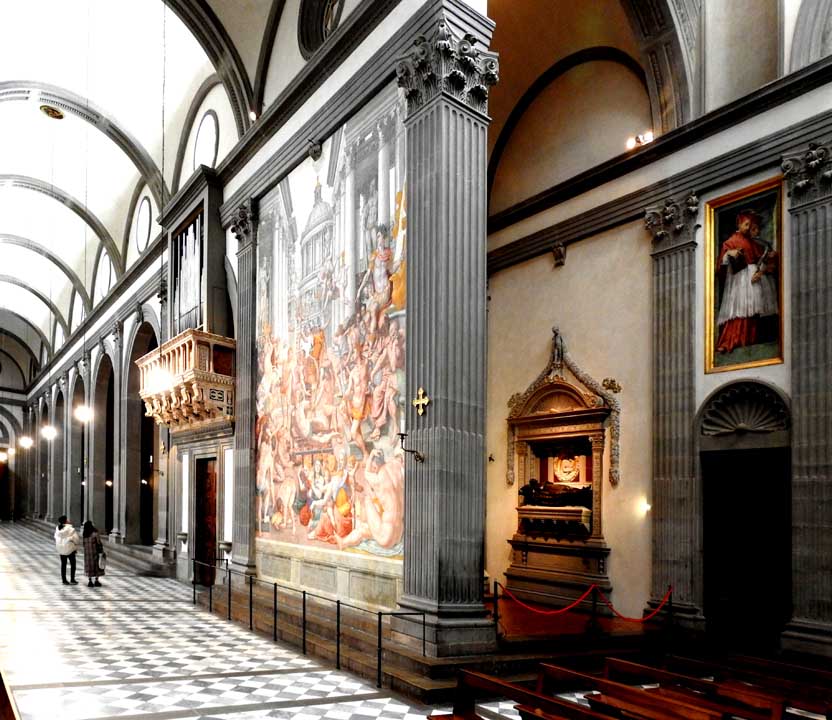 Martyrdom of Saint Lawrence By Bronzino 1565-69 Fresco North aisle The original church was consecrated by St. Ambrose of Milan and dedicated to San Lorenzo Martire (St. Lawrence) in 393. 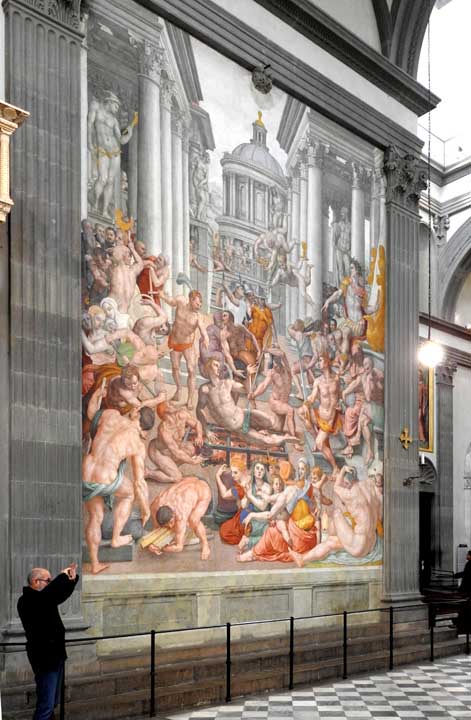 Martyrdom of Saint Lawrence 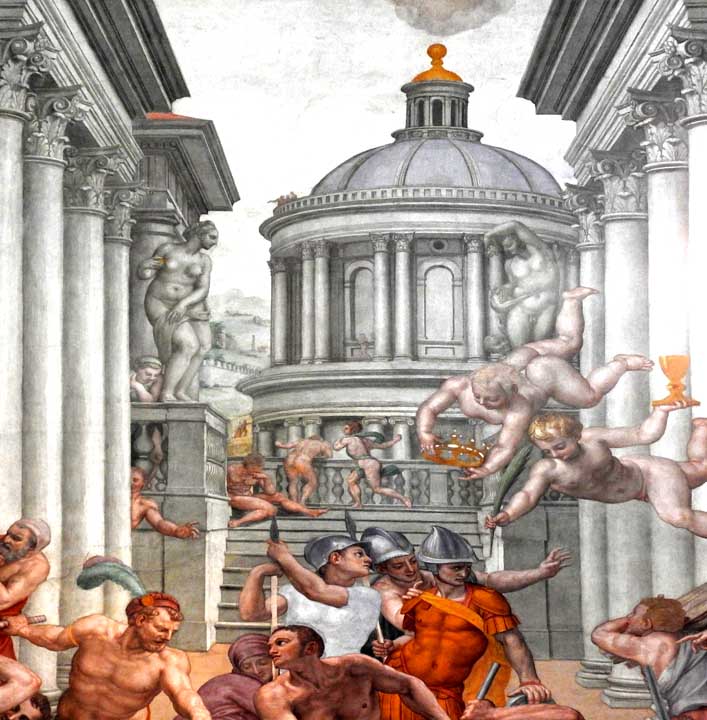 Martyrdom of Saint Lawrence 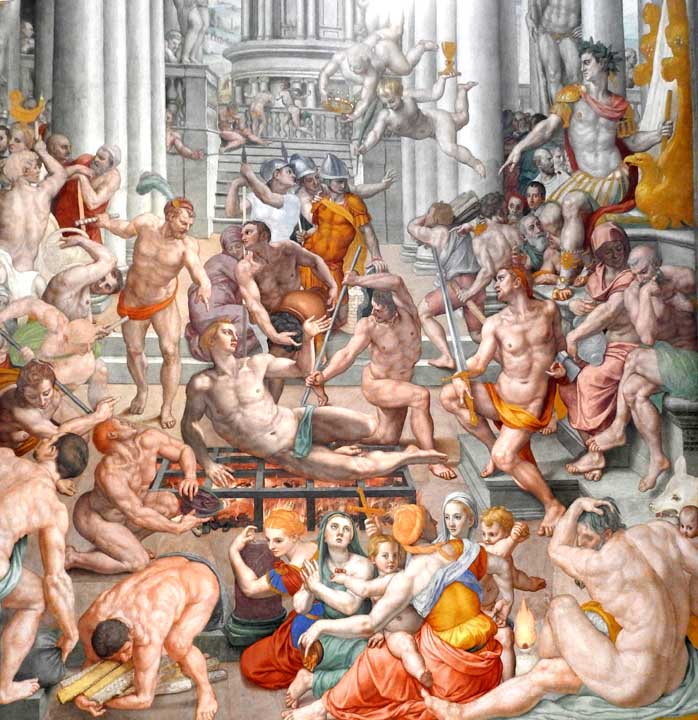 Martyrdom of Saint Lawrence Bottom right figure: Seated
River God : " ... one of Bronzino’s
most historically significant paintings, the very large fresco of the Martyrdom of St. Lawrence in the church
of San Lorenzo, Florence. ... The elderly artist received
the commission of the Martyrdom of St. Lawrence from Duke
Cosimo de' Medici in 1565, and the finished monumental fresco was
unveiled in 1569. The male nude figure is shown here in a complex,
seated pose that is meant to show off the artist's great mastery of
drawing technique, human anatomy, and perspective. The interior
modeling is achieved with seamlessly blended strokes, while the
outlines maintain an impressive vigor of stroke and tonal inflection.
The head and foreshortened facial features, in particular, are very
boldly drawn, almost incisively so with the stick of black chalk, in
order to sharpen and clarify the design for a far viewing distance. The
compressed pose of the figure is precisely pinned down to align
vertically the head, left shoulder, and left knee, and this creates a
stark foreshortening of the limbs. In this, Bronzino's work of the
1560s constitutes a response and a challenge to the mature style of
Michelangelo (who died in 1564). In turn, Bronzino's technical
virtuosity as a draftsman and his superb mastery of his materials made
him the greatest role model for the following generation of Florentine Mannerist
artists." - Carmen C. Bambach, The
Met150 (online May 2020)
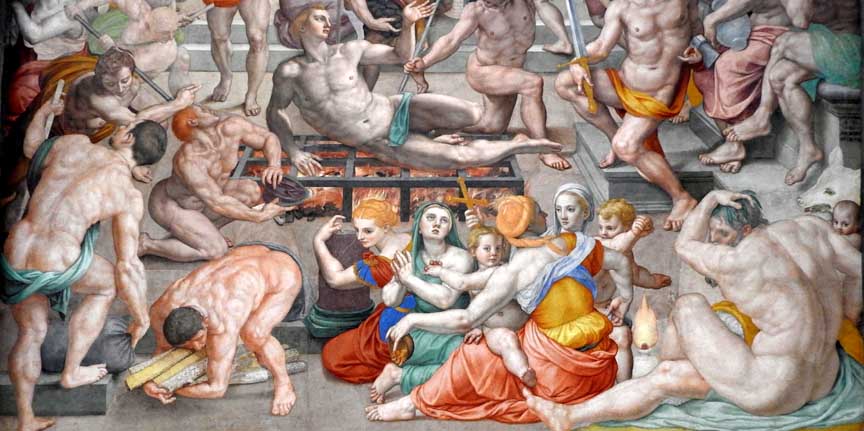 Martyrdom of Saint Lawrence 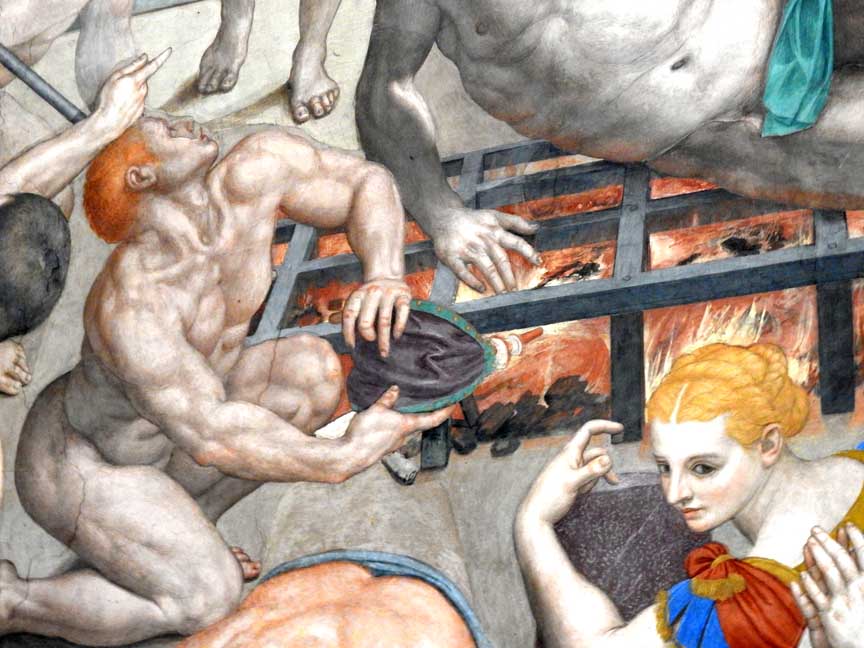 Martyrdom of Saint Lawrence Bellows fan the coal fire |
Martyrdom of St. Sebastian 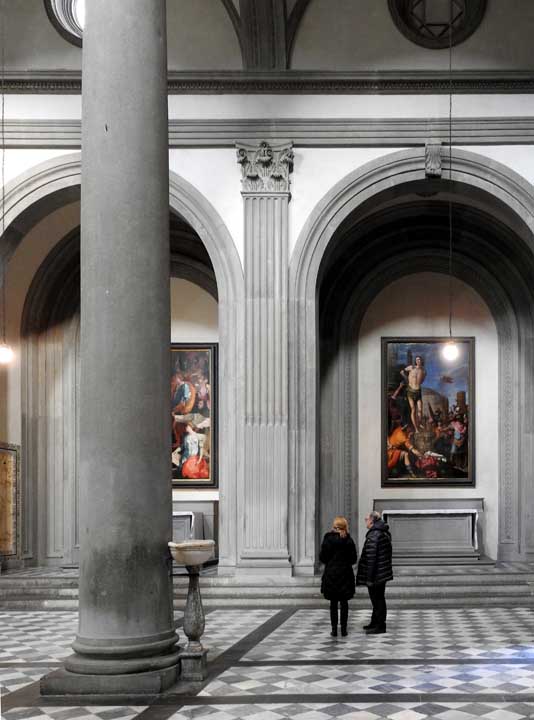 Martyrdom of St. Sebastian North aisle 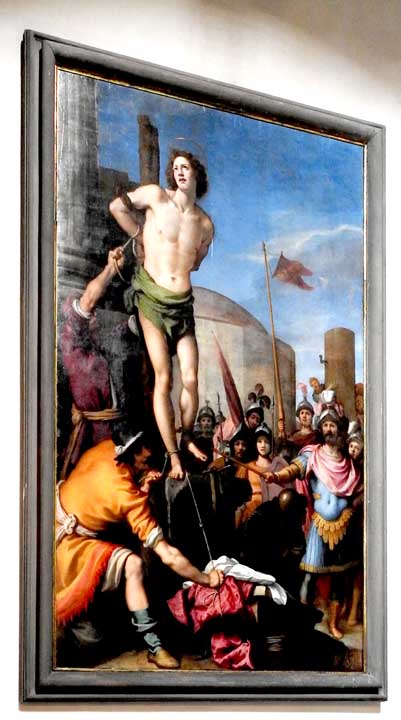 Martyrdom of St. Sebastian ... Two details below: 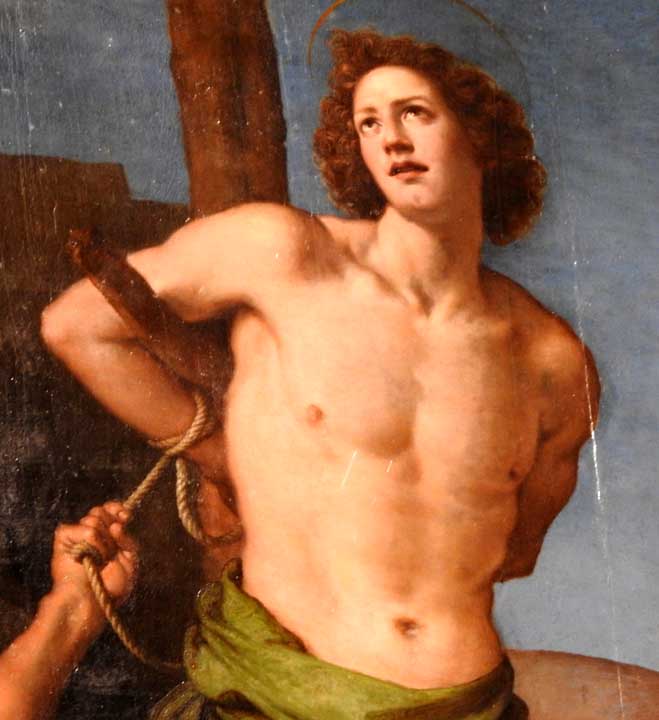 Martyrdom of St. Sebastian 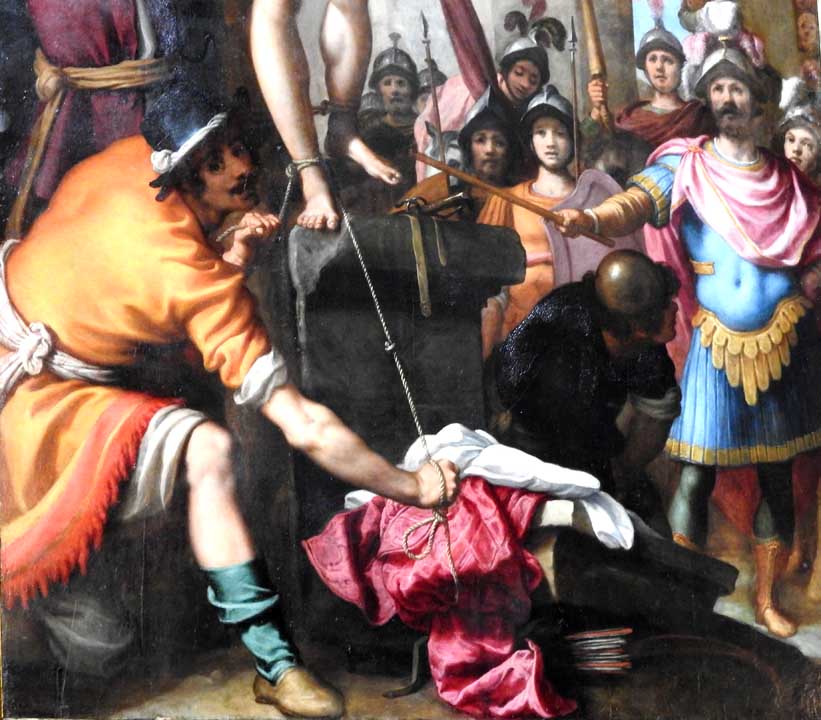 Martyrdom of St. Sebastian |
